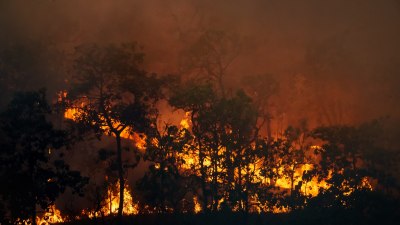How High-Pressure Systems Create Heatwaves
Explore how high-pressure systems contribute to the formation of heatwaves and their impacts.

Image by lovelypeace on Freepik
Heatwaves are extreme weather events characterized by prolonged periods of excessively high temperatures. They often occur during the summer months, but understanding their formation involves a closer look at atmospheric dynamics. One significant contributor to heatwave occurrence is the presence of high-pressure systems. This article will explore the mechanisms by which high-pressure systems create heatwaves, the conditions that favor their development, and the consequences of these intense heat episodes.
Understanding High-Pressure Systems
High-pressure systems, also known as anticyclones, are areas where the atmospheric pressure is higher than surrounding regions. These systems typically form when air in the upper atmosphere cools and becomes denser, causing it to sink. As the air descends, it compresses and warms, leading to increased temperatures at the surface. This process is crucial in the development of heatwaves.
High-pressure systems are characterized by clear skies and minimal cloud cover, which allows for unimpeded solar radiation to reach the Earth’s surface. The absence of clouds also means less heat is trapped in the atmosphere during the night, potentially leading to cooler nights. However, the daytime heating is generally pronounced, and this contrast can significantly increase the overall temperature during a heatwave.
The Formation of Heatwaves
Heatwaves often begin with the establishment of a strong high-pressure system over a specific region. These systems can be stationary, persisting over the same area for days to weeks, or they can be dynamic, moving across regions. The strength and position of the high-pressure system dictate the severity and duration of the heatwave.
Several key factors contribute to the formation of these systems:
- Temperature Inversions: When warm air traps cooler air at the surface, it creates stagnant conditions that can lead to heat buildup.
- Geographical Features: Mountains and valleys can influence wind patterns, trapping heat in certain areas, exacerbating the effects of high pressure.
- Jet Stream Behavior: The positioning of the jet stream can enhance the stability of high-pressure systems, allowing them to persist longer than usual.
As these systems establish themselves, they create a feedback loop: heated surfaces warm the air above, causing more stable conditions that suppress convection and cloud formation.
The Role of Climate Change
Climate change is influencing the frequency and intensity of high-pressure systems and, consequently, heatwaves. Research indicates that as global temperatures rise, the likelihood of prolonged periods of high pressure increases. This phenomenon occurs due to shifting atmospheric patterns and alterations in sea surface temperatures.
Warmer ocean temperatures can contribute to the development of stronger high-pressure systems. Furthermore, climate change affects the natural variability of weather patterns, leading to more amplified dips and ridges in the jet stream, which may facilitate the persistence of heatwaves.
Impacts of Heatwaves
Heatwaves have significant implications for human health, agriculture, and the environment. Extreme heat can lead to heat-related illnesses such as heat exhaustion and heat stroke, particularly for vulnerable populations. Additionally, prolonged high temperatures can exacerbate pre-existing health conditions, leading to increased hospitalizations.
Agriculture is also severely impacted by heatwaves. Crops may suffer from heat stress, leading to reduced yields and crop failures. Livestock can experience physiological stress, affecting their health and productivity. Farmers may need to adapt their practices to mitigate these challenges, which can lead to increased costs.
On an ecological level, heatwaves can disrupt ecosystems, leading to decreased water availability, altered species distributions, and increased mortality rates in flora and fauna. Additionally, extreme temperatures can heighten the risk of wildfires, further impacting ecosystems and human settlements.
Adaptive Strategies
As heatwaves become more frequent and intense, implementing adaptive strategies becomes crucial. These strategies can involve urban planning, such as increasing green spaces to lower surface temperatures and improving ventilation within urban environments. Public health initiatives can also play a critical role, such as issuing heat advisories and establishing cooling centers for vulnerable populations during extreme heat events.
Furthermore, agricultural practices can be adjusted to better withstand heatwaves. This may include selecting heat-resistant crop varieties, altering planting dates, and employing irrigation strategies designed to conserve water and reduce heat stress on crops.
High-pressure systems are integral to the formation of heatwaves, and understanding their dynamics is essential for forecasting and mitigating the impacts of these extreme weather events. As climate change continues to influence atmospheric conditions, the frequency and severity of heatwaves may rise, posing unprecedented challenges to human health, agriculture, and the environment. Preparations and adaptations must be taken to respond to these growing threats and protect communities from the harsh realities of a warming world.











